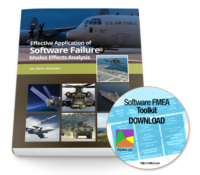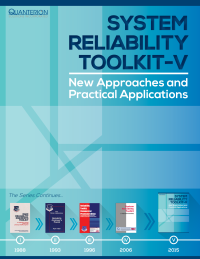1 Reliability and Performance Concerns of GaAs Microwave Monolithic
Integrated Circuits |
1 |
| 1.1 MMIC State-of-The-Art |
1 |
| 1.2 Review of Circuit Performance |
2 |
| 1.2.1 MESFET integrated front-ends |
2 |
| 1.2.2 Heterojunction field effect transistors (HFETs) and MMICs |
3 |
| 1.2.3 HBT analogue-to-digital converters (ADCs) |
4 |
| 1.2.4 HBT power amplifiers |
5 |
| 1.3 Background and Introduction to Reliability of MMICs |
6 |
| 1.4 MMIC Reliability Statistical Distributions |
9 |
| 1.4.1 Failure mechanism and analysis |
9 |
| 1.4.2 Comparison with photodiode circuit data |
19 |
1.5 High Electron Mobility Transistor Circuits: Typical Physics of Failure
Analysis |
20 |
| 1.5.1 The dual channel HEMT MMICs |
21 |
| 1.5.2 Reliability analysis of HEMT circuits |
22 |
| 1.5.3 HEMT monolithic Integrated circuits reliability |
25 |
| 1.5.4 Elevated temperature degradation of HEMT ICs |
28 |
| 1.6 Reliability Study of High Power MMICs |
30 |
| 1.7 Conclusions and Summary |
35 |
| 1.8 References |
37 |
2 General Reliability Considerations as Applied to Microwave Monolithic
Integrated Circuits |
43 |
| 2.1 Introduction |
43 |
| 2.2 Reliability Concepts |
43 |
| 2.3 Design for Reliability |
45 |
| 2.3.1 System architecture and device specification |
46 |
| 2.3.2 Stress analysis |
46 |
| 2.3.3 Derating |
46 |
| 2.3.4 Stress screening |
47 |
| 2.3.5 Failure modes, effects and criticality analysis (FMECA) |
47 |
| 2.3.6 Failure data collection and analysis |
47 |
| 2.4 Practical Aspects of MMIC Reliability |
48 |
| 2.4.1 Avalanche breakdown |
48 |
| 2.4.2 Electrostatic discharge breakdown |
49 |
| 2.4.3 Time dependent gate metal breakdown (TDGMB) |
49 |
| 2.4.4 Second breakdown in bipolar transistors |
50 |
| 2.4.5 Ionic contamination |
50 |
| 2.4.6 Surface charge spreading |
51 |
| 2.4.7 Hot electrons |
51 |
| 2.4.8 Electromigration |
51 |
| 2.4.9 Hillock formation |
52 |
| 2.4.10 Contact spiking |
52 |
| 2.4.11 Metallization migration |
52 |
| 2.4.12 Corrosion of metallization and bond pads |
53 |
| 2.4.13 Stress corrosion in packages |
53 |
| 2.4.14 Die fracture |
54 |
| 2.4.15 Die and substrate adhesion fatigue |
54 |
| 2.5 Testing Concerns in MMICS |
55 |
| 2.5.1 High temperature operating life |
55 |
| 2.5.2 Temperature cycle |
56 |
| 2.5.3 Thermal shock |
56 |
| 2.5.4 Temperature humidity bias (THB) |
56 |
| 2.5.5 Autoclave |
57 |
| 2.5.6 Pressure-temperature-humidity-blas (PTHB) |
57 |
| 2.5.7 Stress cycling tests |
57 |
| 2.5.8 Low temperature operating life |
58 |
| 2.5.9 Mechanical shock |
58 |
| 2.5.10 Variable frequency vibration |
58 |
| 2.5.11 Constant acceleration |
58 |
| 2.5.12 Solder heat |
58 |
| 2.5.13 Lead and stripeline integrity |
59 |
| 2.5.14 RF module burn-in |
59 |
| 2.5.15 Variable frequency vibration |
59 |
| 2.6 References |
61 |
| 3 Monolithic Microwave Integrated Circuit Reliability Testing and Analysis |
63 |
| 3.1 Introduction |
63 |
| 3.2 Accelerated Life Tests |
63 |
| 3.2.1 Life test flow |
65 |
| 3.2.2 RF life test equipment |
66 |
| 3.3 Life Tests and Step Stress Tests |
67 |
| 3.3.1 Constant stress tests |
69 |
| 3.3.2 Constant time stress test |
71 |
| 3.3.3 Test data |
72 |
| 3.4 MMIC Reliability Model |
73 |
3.5 MMIC Reliability Prediction Statistics, Software and Regression
Analysis |
76 |
| 3.5.1 Introduction to MMIC statistics |
76 |
| 3.5.2 Basis for probability plots |
77 |
| 3.6 Conclusions |
81 |
| 3.7 References |
83 |
4 The Role of Finite Element Analysis in CAD For MMIC Reliability
Investigations |
85 |
| 4.1 Introduction |
85 |
| 4.2 Development of The Finite Element Formulation |
86 |
| 4.3 Application of Finite Element Methods to MMIC Components |
91 |
4.3.1 Steady-state temperature distribution in a HDI MMIC package
|
95 |
| 4.3.3 Electric field distribution in a HDI MMIC package |
100 |
| 4.4 Summary and Conclusions |
102 |
| 4.5 References |
103 |
| 5 Reliability Issues of Discrete FETs and HEMTs |
105 |
| 5.1 Introduction |
105 |
| 5.2 Critical Issues for Accelerated Testing |
107 |
| 5.2.1 Accelerated tests |
107 |
| 5.2.2 Electrical characterization methods |
110 |
| 5.2.3 Thermal characterization methods |
111 |
| 5.3 Failure Modes and Mechanisms of GaAs MESFETs |
117 |
| 5.3.1 Gate and channel degradation |
118 |
| 5.3.2 Ohmic contact degradation |
135 |
| 5.3.3 Effects of surface states |
145 |
| 5.3.4 Humidity effects |
149 |
| 5.3.5 Burn-out |
153 |
| 5.4 Failure Modes and Mechanisms of HEMTs |
156 |
| 5.4.1 AIGaAs/GaAs HEMTs |
157 |
| 5.4.2 Pseudomorphic AIGaAs/lnGaAs/GaAs HEMTs |
170 |
| 5.4.3 InP-based HEMTs |
171 |
| 5.5 Reliability Results |
172 |
| 5.5.2 Field results |
176 |
| 5.6 Conclusions |
177 |
| 5.7 Acknowledgements |
178 |
| 5.8 References |
181 |
| 6 Surface-Induced Electromigration In GaAs Devices |
195 |
| 6.1 Fundamentals |
195 |
| 6.1.1 Introduction |
195 |
| 6.1.2 Basic physical phenomena |
195 |
| 6.1.3 Technological surfaces |
197 |
| 6.1.4 Wet etching processes |
201 |
| 6.1.5 Influence of surface quality on metallization structure |
203 |
| 6.2 Electromigration Influence by Real Technology Surfaces |
205 |
| 6.2.1 GaAs (100) surface after chemical treatment |
205 |
| 6.2.2 Electromigration on real technology surfaces |
212 |
| 6.3 Field Induced Electromigration |
217 |
| 6.3.1 XPS analysis |
221 |
| 6.3.2 Relation between surface treatment and threshold voltage |
222 |
6.3.4 Influence of the operational conditions to lateral material
movement |
232 |
| 6.4 Electromigration Associated with ESD |
233 |
| 6.4.1 ESD sensitivity of ohmic contacts |
233 |
| 6.4.2 ESD sensitivity of Schottky contacts (gate structures) |
237 |
6.4.3 Protection circuits against ESD and transients for microwave
devices |
241 |
| 6.5 Discussion of Practical Commercial Examples |
247 |
| 6.5.1 Introduction |
247 |
| 6.5.2 Gradual degradation of output power |
248 |
| 6.5.3 MESFETs developed for digital integrated circuits |
257 |
| 6.5.4 Conclusions |
262 |
| 6.6 References |
263 |
| 7 MMIC Electromigration Methodology |
273 |
| 7.1 Introduction to Electromigration Phenomena |
273 |
| 7.1.1 Electromigration In metallization systems |
273 |
| 7.1.2 Introduction to the physical models |
276 |
| 7.1.3 Electromigration In microwave monolithic Integrated circuits |
279 |
| 7.2 Testing Methodology of Electromigration and Results |
285 |
| 7.2.1 Resistometric method |
286 |
| 7.2.2 Low-frequency noise measurements |
290 |
| 7.2.3 Drift velocity measurement |
295 |
| 7.2.4 MTTF Measurement |
297 |
| 7.2.5 Correlation between the MTTF and resistance Increase |
301 |
| 7.2.6 SWEAT, a ramping stress techniques |
302 |
| 7.3 Computer Simulation of Electromigration |
303 |
| 7.3.1 Film construction for Monte Carlo simulation |
304 |
| 7.3.2 Randomization of grain boundary structures |
305 |
| 7.3.3 Implementation of the physical models |
305 |
| 7.3.4 Typical results |
306 |
| 7.4 Summary |
307 |
| 7.6 References |
309 |
| 8 GaAs Substrate Mechanical Reliability |
317 |
| 8.1 Introduction |
317 |
| 8.2 Mechanical Failures of Device Substrate |
318 |
| 8.3 Thermal-Mechanical Stresses in GaAs Substrates |
320 |
| 8.4 Failure Mechanisms and Damage Models of GaAs Substrate |
329 |
| 8.4.1 Brittle fracture |
330 |
| 8.4.2 Fatigue crack Initiation and propagation |
335 |
| 8.5 Mechanical Properties of GaAs Wafers |
337 |
| 8.5.1 Modulus of elasticity |
338 |
| 8.5.2 Modulus of rupture |
341 |
| 8.5.3 Fracture toughness |
343 |
| 8.5.4 Coefficient of thermal expansion |
346 |
| 8.6 Reliability Design of GaAs Substrate and Package |
348 |
| 8.6.1 Approach for mechanical reliability design |
349 |
| 8.6.2 Design variables and constraints |
350 |
| 8.6.3 Design process |
351 |
| 8.7 Summary |
361 |
| 8.8 Acknowledgments |
362 |
| 8.9 References |
363 |
| 9 MMIC Thermal Analysis |
367 |
| 9.1 Introduction |
367 |
| 9.2 Fundamentals of Heat Transfer |
368 |
| 9.2.1 Heat conduction |
368 |
| 9.2.2 Heat convection |
370 |
| 9.3 Thermal Resistance |
372 |
| 9.4 Aspects of Numerical Simulations |
374 |
| 9.5 Description of The MMIC Circuit for Numerical Analysis |
378 |
| 9.6 Two-Dimensional MMIC Model for Numerical Simulation |
380 |
| 9.6.1 Two-dimensional results and discussions |
381 |
| 9.6.2 Effect of power variation |
382 |
| 9.6.3 Effect of the ambient temperature |
383 |
| 9.7 Three-Dimensional MMIC Model for Numerical Simulation |
384 |
| 9.7.1 Temperature distributions |
384 |
| 9.7.2 Eutectic effects |
387 |
| 9.7.3 Heat sink effects |
387 |
| 9.7.4 Overall thermal resistance |
388 |
| 9.8 Conclusions |
389 |
| 9.9 References |
391 |
| 10 Thermally Stable Gate Metallizations for GaAs |
393 |
| 10.1 Introduction |
393 |
| 10.2 Refractory Metal Systems |
394 |
| 10.2.1 Pt/GaAs and Pd/GaAs |
394 |
| 10.2.2 Ti/GaAs |
394 |
| 10.2.3 Ta/GaAs |
394 |
| 10.2.4 Mo/GaAs |
395 |
| 10.2.5 W/GaAs |
396 |
| 10.2.6 Ti-W/GaAs |
396 |
| 10.3 Refractory Metal Silicides and Nitrides |
396 |
| 10.3.1 WSix/GaAs |
398 |
| 10.3.2 TiWSix/GaAs |
401 |
| 10.3.3 TaSi2/GaAs |
402 |
| 10.3.4 VSix/GaAs |
406 |
| 10.3.5 WNx/GaAs |
406 |
| 10.4 Device Fabrication |
406 |
| 10.5 Tungsten Nitride and (TiW)-Nitride MESFETs |
408 |
| 10.6 Conclusions |
409 |
| 11 Reliability Considerations for MMIC Packages |
415 |
| 11.1 Introduction |
415 |
| 11.1.1 Design constraints Imposed by high frequencies |
415 |
| 11.1.2 MMIC packaging design goals |
417 |
| 11.2 Applying the MMIC Reliability Design Guidelines |
418 |
| 11.2.2 Leads |
421 |
| 11.2.3 Case |
421 |
| 11.2.4 Die and substrate attach |
423 |
| 11.2.5 Lead seals |
423 |
| 11.2.6 Lid and lid seal |
424 |
| 11.3 MMIC Package Reliability Considerations |
424 |
| 11.3.1 Semi-custom packages for high reliability |
425 |
| 11.4 MMIC Power Amplifier Reliable Packaging |
426 |
| 11.4.1 Thermal management |
427 |
| 11.4.2 Electrical performance |
430 |
| 11.5 References |
439 |
| 12 MMIC Radiation Effects |
441 |
| 12.1 Introduction |
441 |
| 12.2 Types of Radiation Effects |
441 |
| 12.3 Transient Radiation Effects |
443 |
| 12.4 GaAs MMIC Radiation Effects |
451 |
| 12.5 Single Event Effects |
453 |
| 12.6 Neutron Radiation Effects |
455 |
| 12.7 Summary |
457 |
| 12.8 References |
459 |
| Index |
461 |







